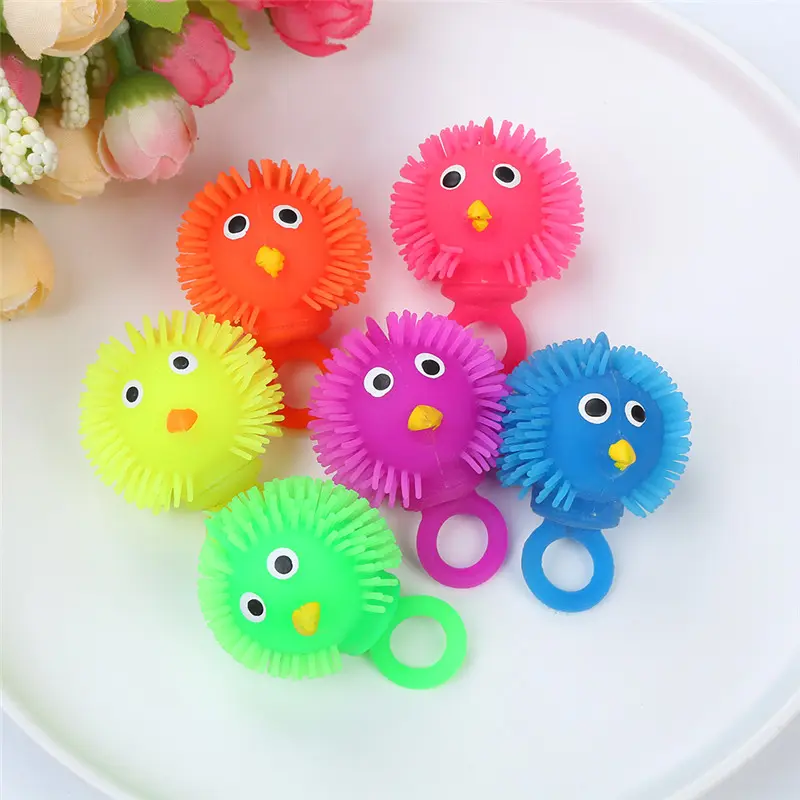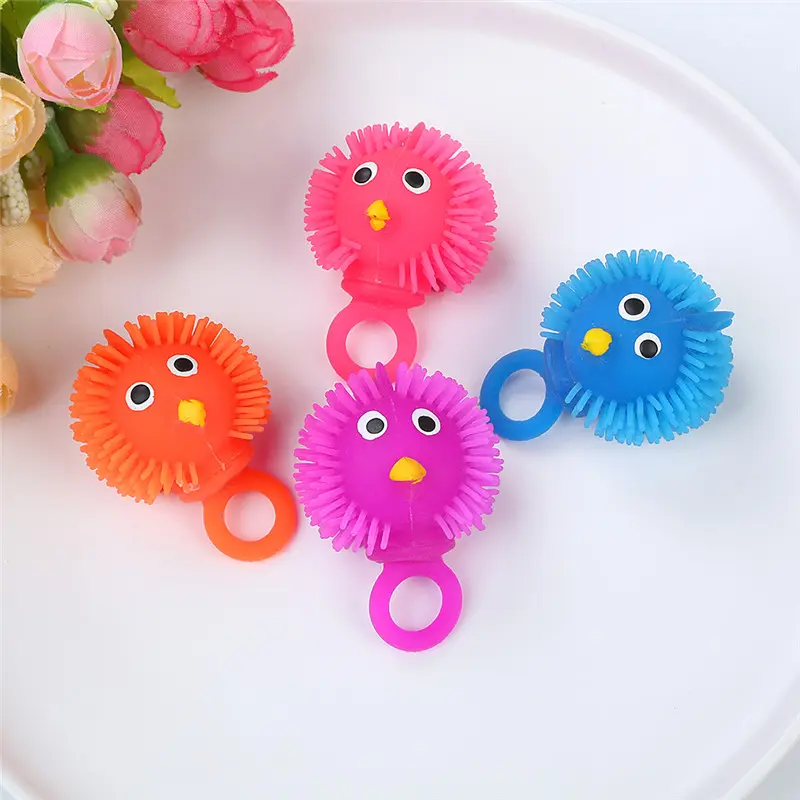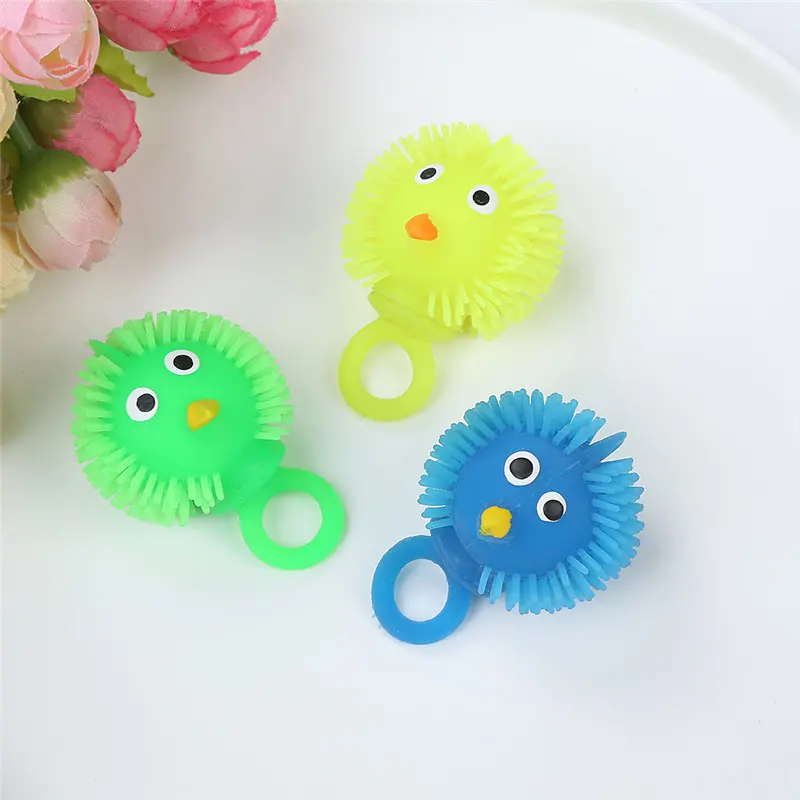Full analysis of TPR toy testing methods
Introduction
In today’s highly competitive international market, decompression toys and relaxation toys are loved by many consumers because of their unique functions and wide applicability. As a new type of toy material products, TPR toys, with their environmentally friendly, non-toxic, soft and other characteristics, occupy an increasingly important position in the field of decompression toys. However, for international wholesale buyers, it is crucial to ensure the quality and safety of TPR toys. Therefore, understanding the various testing methods of TPR toys is not only the key to protecting consumer rights, but also a necessary means to enhance the competitiveness of enterprises themselves.
Physical performance test
Hardness test: It is an important indicator for evaluating the softness and hardness of TPR toys. Commonly used test methods are A-type hardness tester and D-type hardness tester method. By pressing the pressure needle of the hardness tester into the surface of the TPR material and measuring its ability to resist deformation, the hardness value is obtained. For example, some decompression toys for babies to hold require a softer hardness to ensure that they will not cause harm to the baby’s hands; while for some toys that require a certain strength, such as toy balls, a higher hardness is required.
Elasticity test: Tensile testing machines or universal testing machines are mainly used to measure the elastic modulus, tensile strength and elongation at break of TPR materials. The elastic modulus reflects the material’s ability to resist deformation when subjected to force, the tensile strength indicates the maximum stress that the material can withstand during the stretching process, and the elongation at break shows the extent to which the material can stretch before breaking. For example, when testing a TPR decompression toy ball, a higher elastic modulus and tensile strength can ensure that the ball will not be easily deformed or broken when squeezed and stretched, while the appropriate elongation at break gives it good elasticity and recovery ability, and can withstand multiple squeezes and play.
Tear resistance test: A tear tester is used to determine the tear strength and elongation at break of TPR toy materials. This is especially important for some toys with thin edges or that are easily pulled by external forces, such as some decompression toys with animal shapes and flower shapes. The edge parts may be over-pulled during use. TPR materials with good tear resistance can effectively prevent the toys from being torn and extend the service life of the toys.
Compression deformation test: Use a compression tester to apply a certain pressure to the TPR toy to measure its compression strength, compression modulus and compression deformation rate. This is of great significance for some toys that need to withstand a certain weight or pressure, such as toy seats, toy cushions, etc. The smaller the compression deformation rate, the better the toy can recover after being compressed and maintain its original shape and function.
Chemical performance test
Density test: By measuring the mass and volume of TPR toys, its density is calculated. The size of the density can indirectly reflect the composition and structure of the material, and it also affects the weight and performance of the toy. For example, when designing some toys that need to be suspended in water, it is necessary to accurately control the density of the TPR material so that it can achieve the ideal suspension effect.
Combustion performance test: Use a combustion performance tester to test the burning rate, burning time and smoke generation of TPR toys. This is of great significance to ensure that the toy will not burn and spread rapidly when encountering a fire source, thereby ensuring the safety of the user. Especially for some TPR toys with flammable parts such as hair and fabric, such as dolls that are a combination of plush toys and TPR accessories, strict combustion performance testing is essential.
Chemical corrosion resistance test: Expose TPR toys to different chemicals, such as acid, alkali, and salt solutions, and observe the changes in their surface and performance. This can evaluate the stability and durability of some toys that may be exposed to various chemicals, such as outdoor toys and scientific experiment toys, in different environments.
Safety performance test
Eight heavy metal dissolution test: Mainly detect the dissolution of eight heavy metals such as antimony, arsenic, barium, cadmium, chromium, lead, mercury, and tin in TPR toys. Because these heavy metals are toxic to the human body, especially the health and development of children, this test is a key link to ensure the safety of toys. For example, some TPR toys with color coatings or metal additives must undergo strict eight heavy metal dissolution tests to ensure that they will not release excessive amounts of harmful heavy metals under normal use and abuse.
Phthalate content test: a test specifically for plastic products. Since TPR is a soft rubber, it is a must-test item. Phthalate is a commonly used plasticizer, but it may interfere with the human endocrine system. Depending on the different users of the toys, the test items are also different. Children’s toys under 3 years old usually need to do 6 tests, while children’s toys over 3 years old can generally consider doing 3 tests, but the specific needs to be determined according to customer requirements.
Formaldehyde and azo dye test: detect whether TPR toys contain excessive formaldehyde and azo dyes. Formaldehyde is a common harmful chemical that irritates the human respiratory system and skin; and azo dyes may decompose under certain conditions to produce harmful aromatic amines, posing a potential threat to human health.
Environmental performance test
Weather resistance test: expose TPR toys to different environmental conditions, such as ultraviolet rays, high temperature, high humidity, salt spray, etc., to evaluate their resistance to natural environmental factors during long-term use. This is especially important for some TPR toys used outdoors, such as beach toys, outdoor sports toys, etc. For example, TPR toys that are exposed to the sun for a long time may fade, become brittle, and have performance degradation if they are not weather-resistant, affecting their normal use and service life.
Degradability test: With the continuous improvement of environmental awareness, degradability has become an important indicator for evaluating the environmental friendliness of toy materials. For TPR toys, the degradability test mainly simulates soil burial, humidity and heat in the natural environment to observe the degree of degradation within a certain period of time. TPR toys with good degradability can decompose into harmless substances faster after being discarded, reducing pollution to the environment.
Other tests
Microbial test: Detect whether there are harmful microorganisms on TPR toys, such as bacteria and mold. For some toys that are in close contact with the human body, such as baby toys and plush toys, excessive microorganisms may cause harm to human health. Therefore, microbial testing can ensure that the toys are not contaminated by microorganisms during production, storage and transportation, and meet hygiene standards.
Packaging material testing: Test the packaging materials of TPR toys to check whether they contain harmful substances, such as heavy metals, solvent residues, etc. The packaging materials are in direct contact with the toys, and their safety will also affect the overall safety of the toys. In addition, reasonable selection of packaging materials can also improve the shelf life and transportation safety of toys.
Summary of TPR toy test methods
Test category Test item Brief description of test method Test purpose Common test standards
Physical property test Hardness test Use A-type or D-type hardness tester to measure the hardness of TPR material Determine whether the hardness and softness of the toy meet the design and use requirements ASTM D2240, ISO 868
Elasticity test Use tensile testing machine or universal testing machine to measure elastic modulus, tensile strength, elongation at break and other indicators Evaluate the elasticity and tensile strength of toys to ensure that they are not easily deformed and broken during use ASTM D412, ISO 37
Tear test Use tear testing machine to test tear strength and elongation at break Test the tear resistance of toys when pulled by external force to ensure the durability of toys ASTM D624, ISO 34-1
Compression deformation test Use compression testing machine to measure compression strength, compression modulus and compression deformation rate Measure the deformation and recovery ability of toys after compression, which is particularly important for toys under pressure ASTM D695, ISO 744
Chemical property test Density test Measure mass and volume and calculate density Understand the composition and structure of materials, which affect the weight and performance of toys. ASTM D792, ISO 1183
Combustion performance test Use combustion performance test instruments to evaluate the burning rate, time and smoke volume Ensure that toys will not burn quickly when encountering a fire source to ensure the safety of users ASTM D6413, ISO 1210
Chemical corrosion resistance test Expose materials to different chemicals and observe changes Evaluate the stability and durability of toys in different chemical environments ASTM D543, ISO 9006
Safety performance test Eight heavy metal dissolution tests Detect the dissolution of eight heavy metals such as antimony, arsenic, and barium Prevent harmful heavy metals from being absorbed by the human body through oral or skin contact and endangering health EN71-3, ASTM F963
Phthalates content test Select 3, 6 or 15 tests according to the user Ensure that the phthalates content is within the safety limit to avoid interference with the human endocrine system EN71-9, ASTM F963
Formaldehyde and azo dye test Detect formaldehyde content and azo dye decomposition products Prevent harmful chemicals from causing irritation and potential harm to the human body GB/T 250, GB/T 17592
Environmental performance test Weather resistance test Expose to ultraviolet rays, high temperature, high humidity and other conditions, observe performance changes Evaluate the environmental adaptability and life of toys during long-term use ASTM G154, ISO 4892
Degradability test Degradation test by simulating soil burial, hot and humid conditions, etc. Understand the degradation of toys after they are discarded and reduce pollution to the environment ASTM D6400, ISO 14855
Other tests Microbial test Detect harmful microorganisms such as bacteria and mold Ensure that toys are hygienic and safe and meet the requirements for contact with the human body GB/T 15979, ISO 11734
Packaging material test Detect the content and performance of harmful substances in packaging materials Ensure that packaging materials are safe and non-toxic and do not affect the quality and shelf life of toys GB/T 10004, ASTM D3077
Conclusion
For companies engaged in decompression toys and relaxation toys independent station business, fully understand and strictly implement TPR Various testing methods for toys are the key to ensuring product quality, meeting customer needs, and expanding the international market. Through the above detailed introduction to TPR toy testing methods, we hope to help international wholesale buyers better control product quality, provide consumers with safe, environmentally friendly, and reliable TPR toys, and jointly promote the healthy development of the decompression toy industry in the international market.
Post time: May-09-2025


